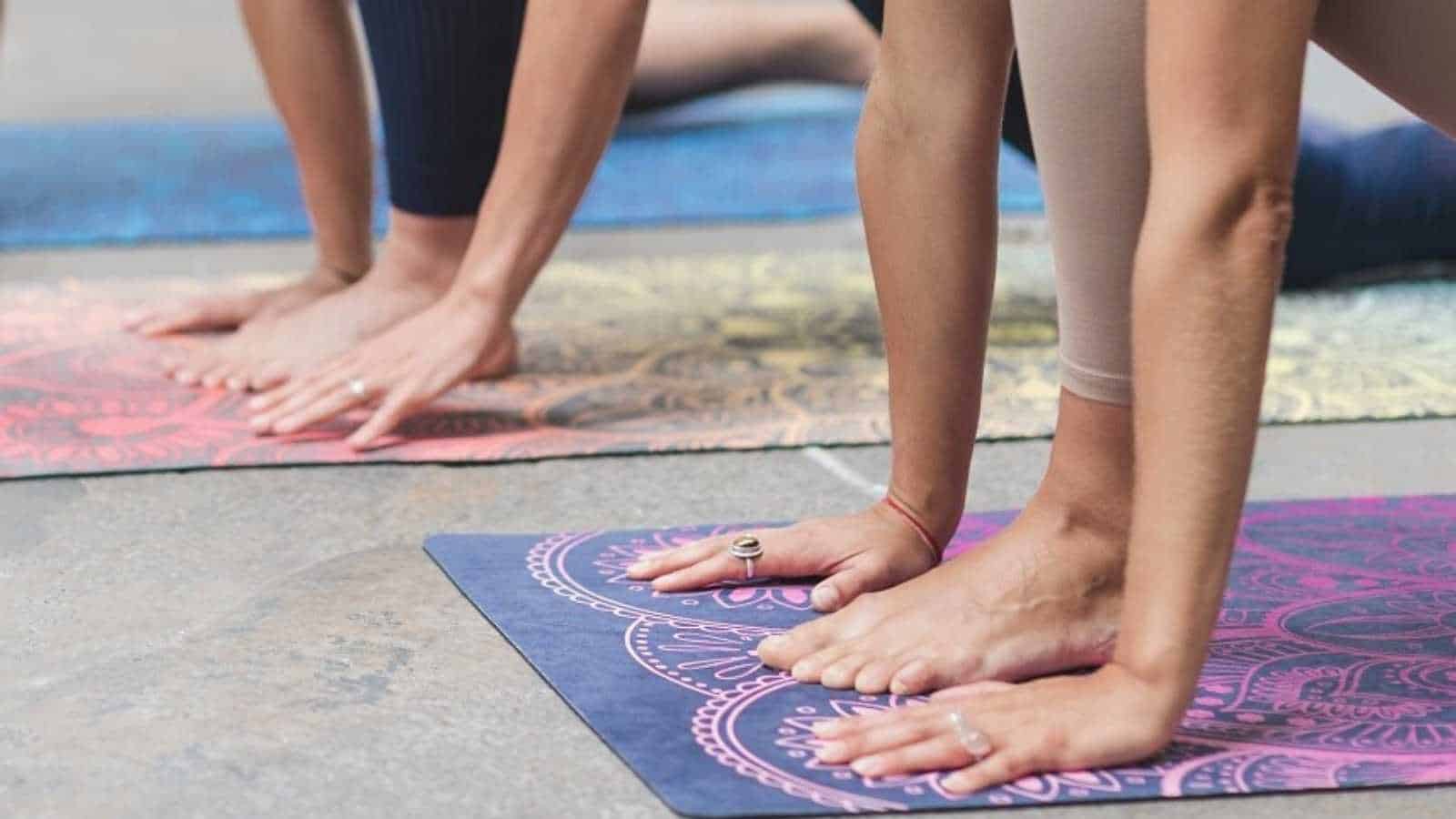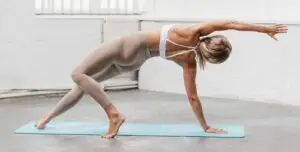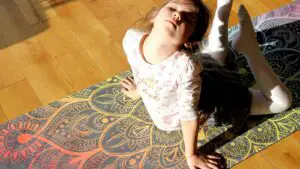If you wish to develop and sustain a regular yoga practice, it’s best to have a comfortable yoga mat you can quickly lay out to get started. And selecting the correct yoga mat is imperative to helping you get better.
A yoga mat can be too thick. While the ideal thickness for a yoga mat will differ from person to person, it can be considered to be too thick if your hands and feet sink into it when you perform an asana. However, there are situations in which a thick yoga mat can come in useful.
This article will explore how to tell when your mat is too thick and why you should generally avoid thick mats. I’ll also explain some instances in which a thick mat can instead be beneficial.
What is the Right Thickness for a Yoga Mat?
Ideally, a yoga mat should be between 2-6 mm (0.078 and 0.236 inches) thick to ensure that you can connect with your store and your joints are protected at the same time. For intermediate and advanced practitioners, a mat that’s around 4.5 mm (0.177 inches) thick would be ideal.
Generally speaking, if you notice yourself sinking into the mat and feeling unbalanced during an asana, your yoga mat is probably too thick.
Some practitioners use thicker mats based on the type of yoga they’re engaging in. However, even thick yoga mats have a limit. While a thickness of up to 6 mm (0.236 inches) is acceptable, any thicker and you will lose the essence of your practice.
Why You Should Avoid Thick Mats
Some practitioners use thicker mats for the extra padding, especially if they are dealing with knee or other joint issues. However, as mentioned, a mat thicker than 6 mm (0.236 inches) can adversely affect your practice.
It is Harder To Balance on Thick Mats
If your regular yoga practice involves several balancing asanas (postures), then a thicker mat can make it challenging to perform them.
For example, tadasana (mountain pose) and vrikshasana (tree pose) require a strong sense of grounding before you can mentally sink into the posture. A thick mat will make it difficult to feel the ground underneath, making it harder to develop the balance required to hold the pose.
If you’re wondering how to practice vrikshasana, here’s a YouTube video you can refer to:
A Thick Mat Can Cause Your Body to Be Misaligned
If you’ve learned yoga at an ashram, you can be sure that your instructors have checked your alignment to ensure you aren’t performing asanas in a way that could injure you.
However, some people may sign up for online classes or learn and practice yoga through YouTube videos. When doing so, it’s imperative to follow the instructions carefully to ensure you’re performing the asanas correctly.
With the proper instructions, it’s easy to align your body during a yoga session properly. However, a thicker mat can more easily lead to misalignment, as the pressure you exert towards the ground may not be evenly distributed.
Apart from an ineffective practice, misalignment can lead to serious injury over time.
A Thick Mat is Too Relaxing
An effective yoga practice should be able to blend static and dynamic elements into a flow of movement. It involves a delicate balance of challenging one’s physicality while allowing oneself to relax at intervals.
A thick mat can make it harder to bring your awareness into the practice by providing a relaxing base during the intervals between asanas. It’s best to get a yoga mat that allows you to stay alert while your body is in a relaxed state.
A Thick Mat Can Cause Portability Issues
Extra thick yoga mats tend to be much heavier than thinner varieties, making them a burden to lug around with you when you’re taking off on a trip or even when you’re carrying it to the yoga studio.
Aside from the mat’s weight, you may also find it tricky to roll up a thick mat and pack it into a snug spot in your travel bag.
When to Use a Thick Mat
As mentioned above, most experienced yogis and instructors recommend a mat thickness between 4 and 4.5 mm (0.157 and 0.177 inches).
However, you can find mats that are thicker than that on the market, and you can use mats of up to 6 mm (0.236 inches) in most yoga sessions.
You may be wondering why we’re talking about thicker mats – after all, as discussed above, mats that are too thick can cause major issues while you do yoga. However, there are some situations in which they are actually beneficial rather than harmful.
You Should Use a Thick Mat When You’re Starting Out
When you’re starting out, you may focus solely on comfortable asanas that require you to move little or stay in contact with the ground. Balancing postures are typically learned later in one’s practice, so getting a thicker mat in the beginning, can help.
Beginners are also prone to making mistakes in certain poses, like banarasana (lunge), which requires placing your knee on the mat. With a thicker base, you’re less likely to get hurt even when making a mistake during your asanas.
Of course, as you improve your practice and include more challenging postures into your routine, it’s best to reduce the thickness of your yoga mat. A thick mat may work well in the early stages of your practice, but you’ll need to upgrade to a thinner one over time.
You Should Use a Thick Mat When Practicing Restorative Yoga
Some yoga practices, like Ashtanga, Bikram, and Vinyasa yoga, tend to be more intense and require swift changes between postures. A thick mat can impede these practices by making the transitions more challenging.
However, restorative yoga can be practiced on thicker mats as they often require that each asana be held for an extended duration. Some restorative practices include:
- Hatha Yoga: This is a practice that stresses aligning the solar and lunar energies within the body through coordination of the mind, body, and breath.
- Yin Yoga: Yin yoga is a slow, mindful form of yoga that places emphasis on holding each posture for an extended duration. It focuses on the fascia or connective tissue that surrounds our muscles and organs.
- Iyengar Yoga: Some schools teach Iyengar yoga as a therapeutic practice. In essence, it is a sort of massage you give yourself through a gradually-paced yoga session.
Final Thoughts
Yoga is about learning to ground yourself through a steady flow, which can be complicated with a thicker mat as the cushioning prevents you from feeling the ground beneath. Connecting with the ground beneath you is imperative, especially during the more challenging balancing postures. While you may start with a thick mat, it’s best to switch to the normal range as you improve your practice (unless you’re practicing restorative yoga).








